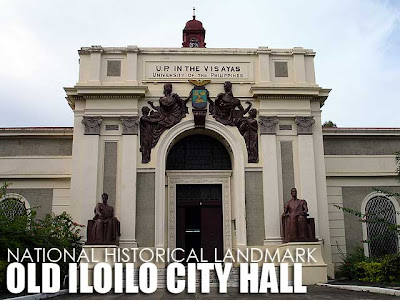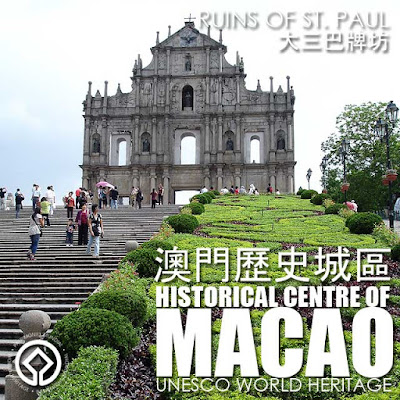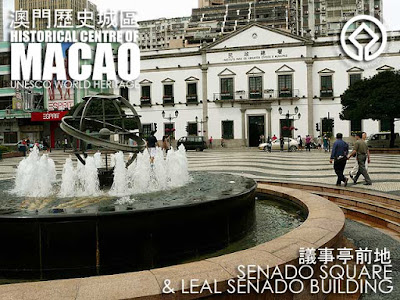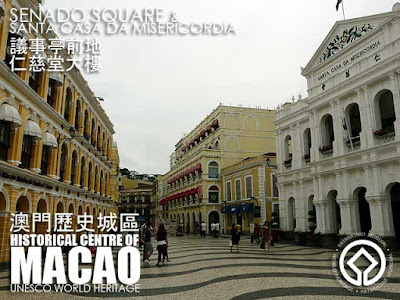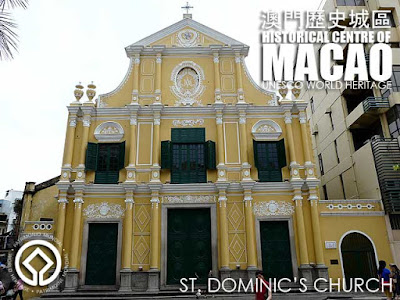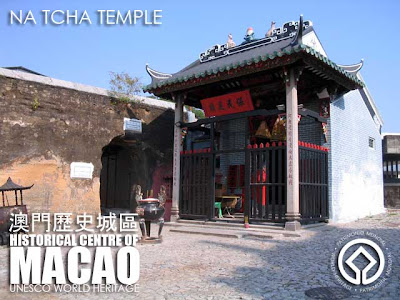
Who said you need to fly to Portugal to have a taste of authentic Portuguese food? Macau being a former Portuguese colony, is a haven for Portuguese cuisine. To add, it has a healthy community of expat Tugas who own many of the Portuguese restaurants.

For our second night, we had dinner at
Miramar Portuguese Food in Coloane Island. The restaurant is by the beach and has both indoor and outdoor dining. Our dinner included
Sonhos de Bacalhau (Codfish Dreams) HK$/MOP37,
Rissois de Camarao (Shrimp Rissois) HK$/MOP40,
Bacalhau Assado na Brasa (Steamed Salt Codfish served with Boiled Potato, Chick Peas, Eggs and Cabbage) HK$/MOP148,
Frango Assado no Carvao com Batata Frita e Salada (Barbecued Chicken with French Fries and Salad) HK$/MOP120, and the highlight of the night
Perna de Carneiro Assada no Forno con Batata Assada (Oven-cooked Leg of Lamb with Roast Potatoes) HK$/MOP298. I personally like the Barbecued Chicken and Leg of Lamb which comes with a special mint sauce on the side.
We even had Portuguese beer,
vinho verde branco and brandy to go with our dinner. The owner, Antonio Peralta, was a very gracious host. While behind the success of the kitchen is Afro-Portuguese chef Rosa Maria Conceicao.

For our third night, we had dinner at the Michelin-recommended
Antonio Restaurante on Taipa Island. It's a really small but cozy restaurant in Taipa's old quarter. We actually joined Chef Antonio Coelho in the morning at Macau's Red Market as he shopped for the freshest ingredients for our dinner.
That evening, we had
Presunto Portugues Pata Negra ("Pata Negra" Portuguese Smoked Ham) HK$/MOP255 for starters. Then he served us something not in the menu,
Camarao con Quejo (Prawn Cocktail with Spicy Cow Cheese from Azores). You can actually ask Chef Antonio to prepare dishes that are not in the menu as many of his regulars do.

Then came in the
Arroz de Marisco a "Antonio" Servido em Tacho de Barro (Seafood Rice "Antonio" Style Served in a Ceramic Pot) HK$/MOP400 and the
Secretos de Porco Preto Grelhados no Carvao com Batata Frita e Salada Mista (Black Pork Fillets imported from Portugal on Charcoal Barbecue with French Fries and Salad) HK$/MOP170. Again, lots of Portuguese red and white wine and champagne to accompany the dishes. Chef Antonio even showed us how to open a champagne bottle with a sword.


Finally, for our Day 4 lunch, we tried out the Sunday buffet at
Clube Militar de Macau 澳門陸軍俱樂部. Of course, the highlight of their regular Sunday buffet is the
Cozido à Portuguesa which is a stew made of assorted meat including pork, chicken, and beef boiled with assorted vegetables and Portuguese sausages which include
chouriço (pork sausage),
morcela (blood sausage) and
farinheira (flour sausage), which you eat with rice and boiled potatoes.
The buffet, which includes
Bufete de Salada (salad buffet),
Sopa de Cozido (meat broth soup) and the
Cozido à Portuguesa, plus
Bufete de Sobremesas (dessert buffet) costs HK$/MOP128 per head, not bad for a really heavy meal.
Portuguese Restaurants in Macau
Here is a list of recommended Portuguese restaurants in Macau. Make sure you request your hotel concierge to reserve your table. And do arrive at the restaurant on time because Macau restaurants are usually very full and busy.
Also ask the concierge to write the Chinese name of the restaurant for the taxi driver. Some restaurants are in Taipa and Coloane, so the taxis will be more expensive. Buses are also available.
Macau red and white wines are excellent and reasonably priced, so order some to go with your meal. All the restaurants have Filipinos with their staff which we experienced first hand. Feel free to ask them for suggestions on their specialties and on moderately-priced good wines.
A Lorcha
Rua Almitante Sergio No. 289, Macau
Tel. +853 28313193
Note: Also serves Macanese cuisine. Try out their Grilled Prawns with Garlic, Stewed Oxtail, Clams (Lorcha Style), Steamed Crab, Feiojada (Pork and Bean Stew), Spicy Charcoal Grilled Chicken, and Mixed Seafood Rice (Portuguese Style)
Antonio Restaurante
Rua dos Negociantes No.3, Taipa, Macau,
Tel. +853 28999998
Camoes Restaurant
Shop 101, Lisbon-Evora, Macau Fisherman’s Wharf
Tel. +853 28728818
Clube Militar de Macau
Av. da Praia Grande, 975
Tel. +853 28714000
Restaurante Escada
Rua de Se Nº 8, Macau (Leal Senado Square)
Tel. +853 28966900 / 28389229
Note: Also serves Macanese cuisine. Try out their Portuguese Homemade Soup, Cod Fish Cake, Hot Spicy Sardine, Clam with Lemon, Curry King Prawn, Codfish with Cream, Bitioque (Portuguese steak with white wine and garlic sauce) and Portuguese desserts
Espaco Lisboa
Rua das Gaivotas, Coloane
Tel. +853 28882226
Note: Try out their Pata Negra (Portuguese Superior Ham), Special Portuguese Sausage “An Flambe,” Traditional Portuguese Duck Rice, Prawns with Garlic Sauce, Salad de Bacalhau com Grao (Codfish salad with Beans), Cochinillo, and Baked Bacalhau (with cream, potatoes and bread crumbs)
Fernando’s
09 Praia De Hac Sa, Coloane
Tel. +853 28882531
Note: Try out their Cochinillo, all seafood items on the menu and Fresh Salad
Miramar
Zona Norte da Praia de Hác Sá
(near Westin Resort)
Tel. +853 28882623 / 28882601
O Manel
Rua Fernao Mendes Pinto, No. 90, Taipa
Tel. +853 28827571
Note: O Manel is small but the food is super delicious. You may have to wait in line, even if you have a reservation. Try out their Clams with Lemon & Garlic Sauce, Torresmos (Crisp Fried Pork Strips), Grilled Spareribs, Grilled Sardines, Grilled Bacalhau, Grilled Bass, Favas (Pork and Bean Casserole), Fresh Vegetable Salad, Octopus Rice, Grilled Chorizos and Baked Apple for dessert
O Santos Restaurant
No. 20, Rua de Cunha, Taipa Island
Ristorante Platao
Travessa de S. Domingos No. 3, r/c B, Edf. Jardim Lok Va,
(the side street where McDonalds is in Leal Senado)
Tel. +853 28331818
Vela Latina Restaurant
201 Avenida Almeida Ribeiro
Tel. +853 28356888













